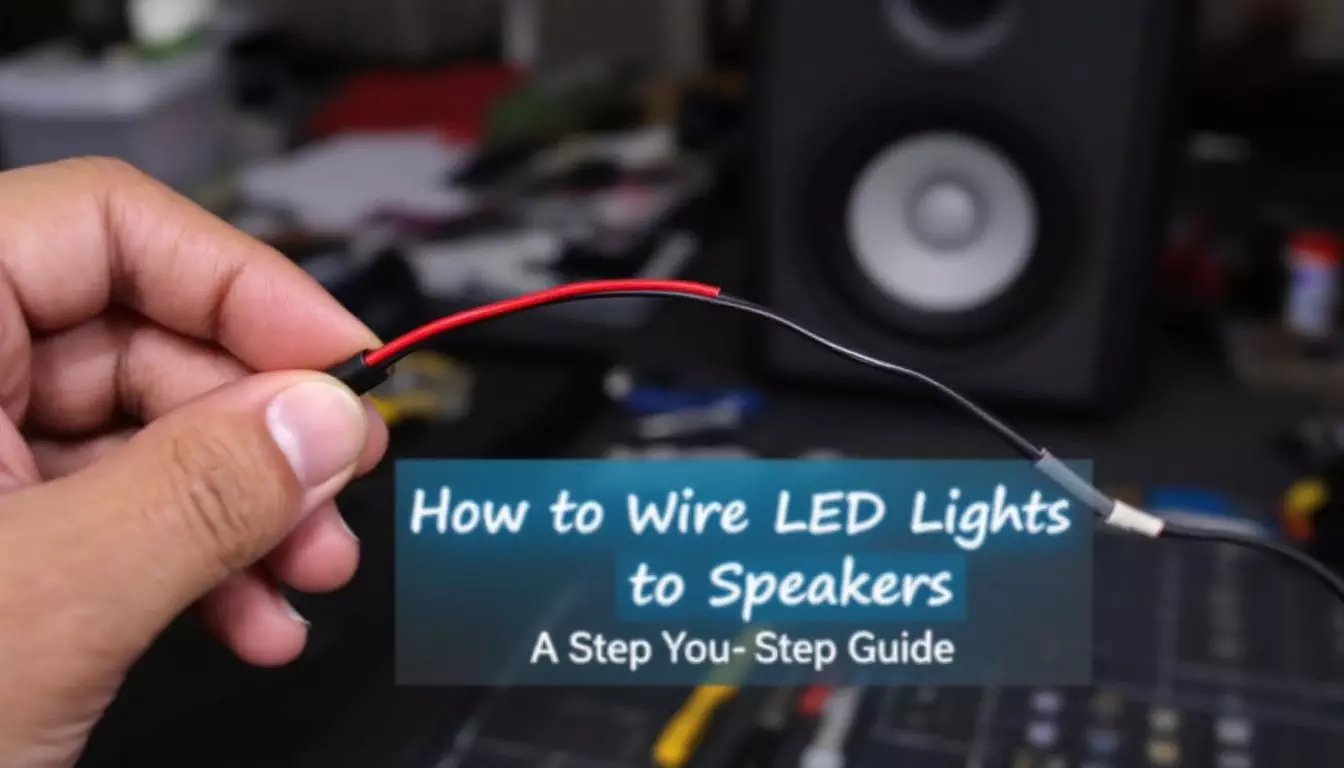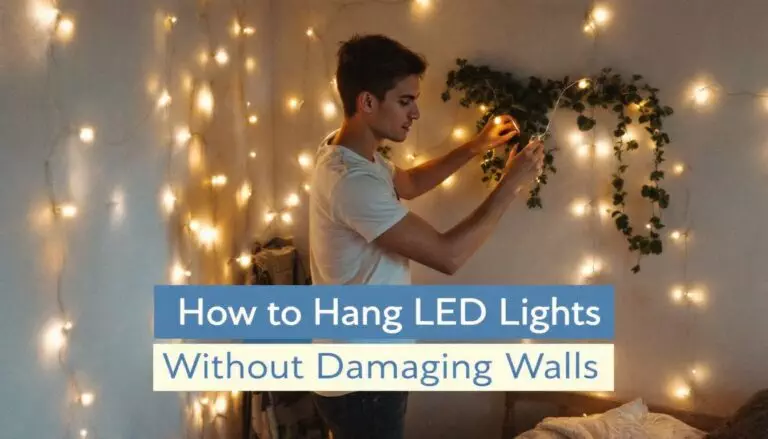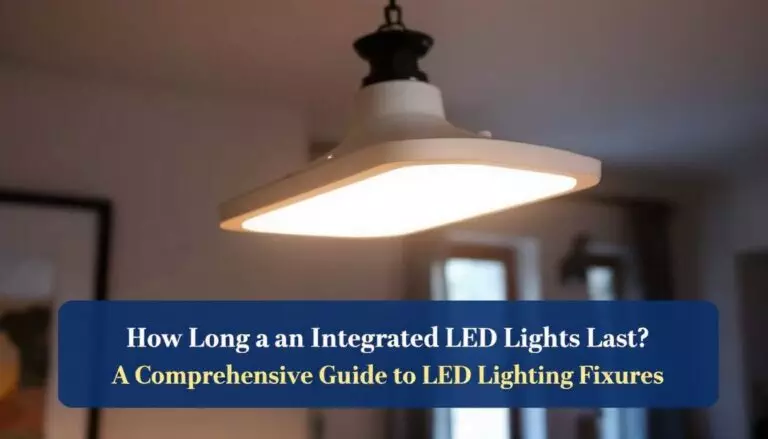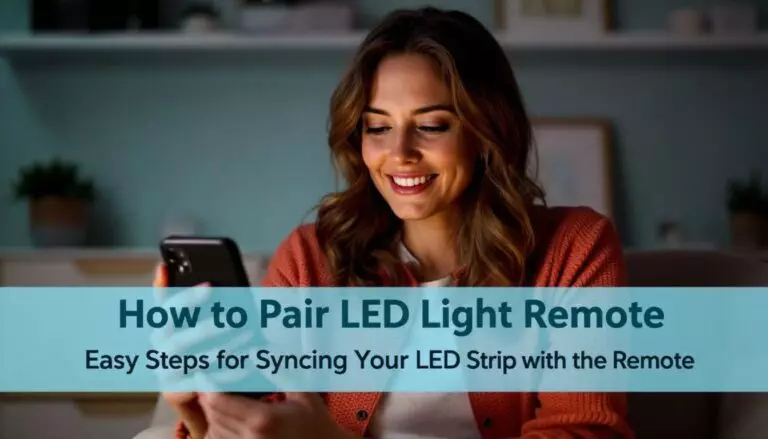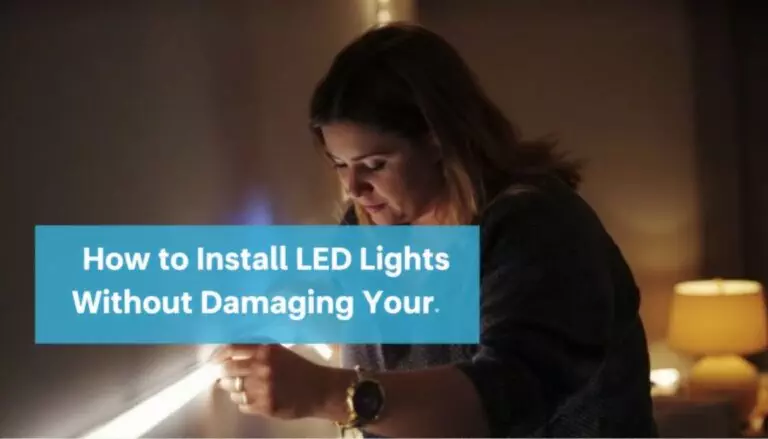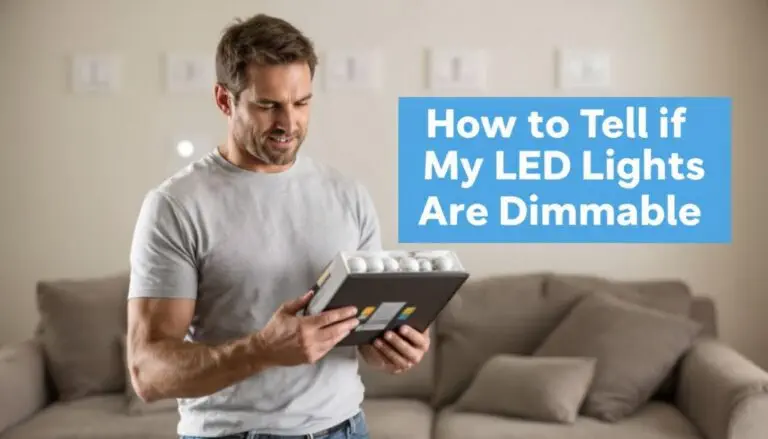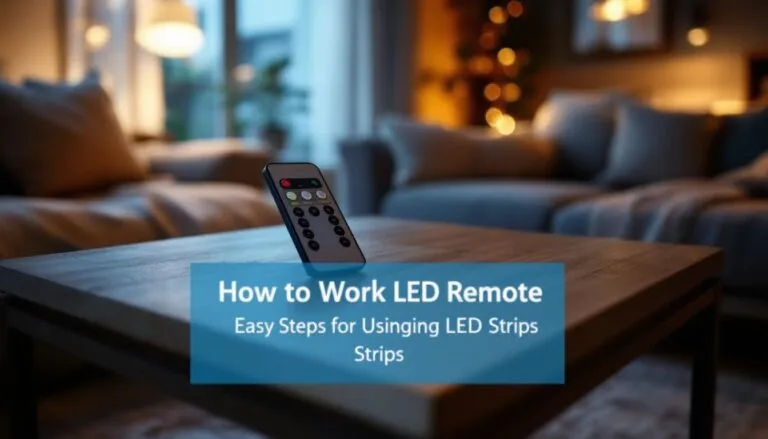How to Wire LED Lights to Speakers: A Step-by-Step Guide
Wiring LED lights to speakers can be tricky. Many DIYers struggle with finding the right connectors and wire sizes. This guide will show you how to wire LED lights to speakers step by step.
You’ll learn which tools work best and how to avoid common mistakes.
I’ve handled countless home lighting projects over the years. My experience will help you get this job done right. You’ll soon have a cool LED setup that syncs with your music. Ready to light up your space? Let’s get started!
Key Takeaways
- LED lights can sync with music when wired to speakers.
- You need LED strips, speaker wire, tools, and safety gear.
- Connect LEDs to speaker terminals using the headphone or line output.
- Use a resistor if your system lacks a current limiter.
- Test the setup with low volume and fix any issues before use.
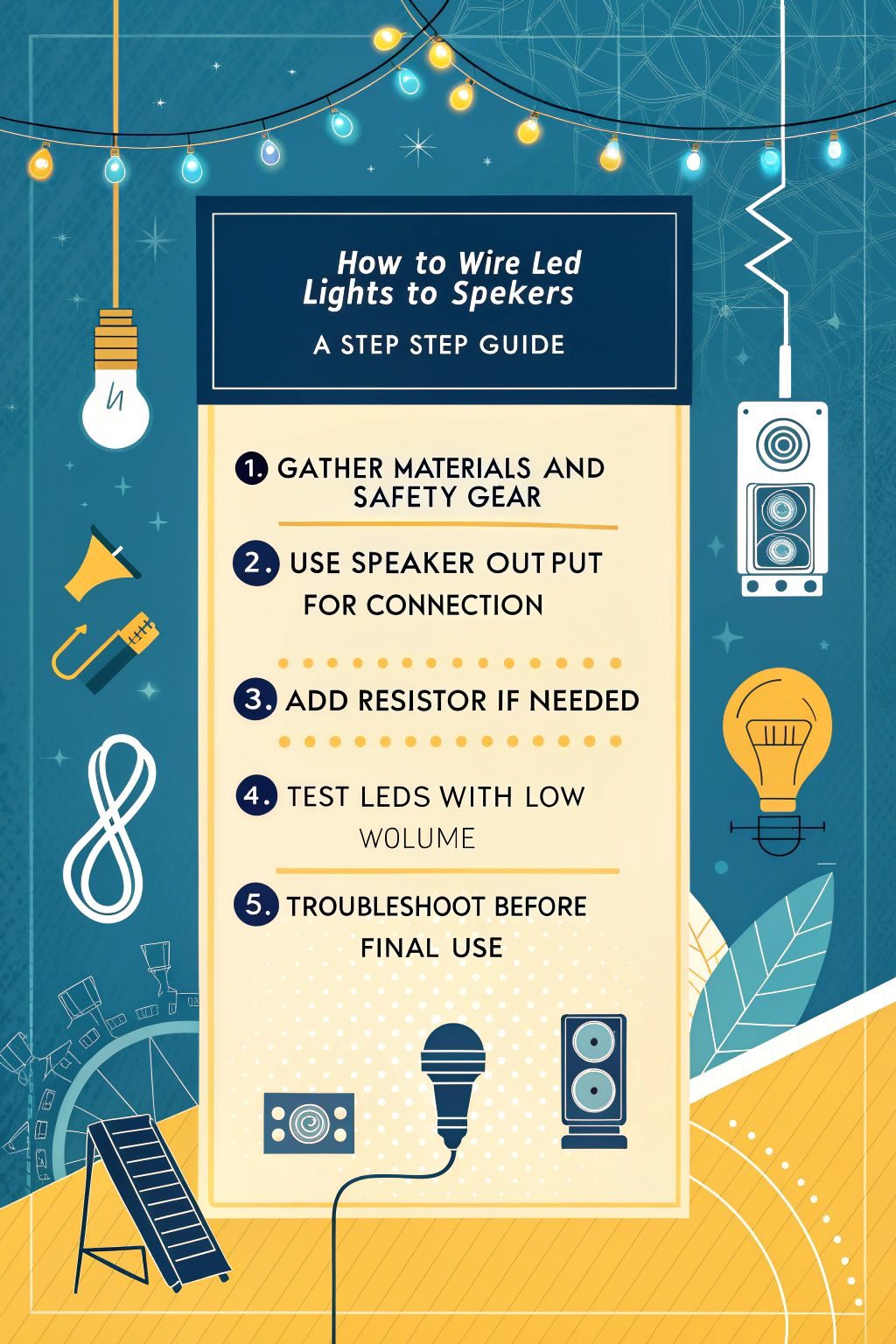
Preparing Materials and Tools
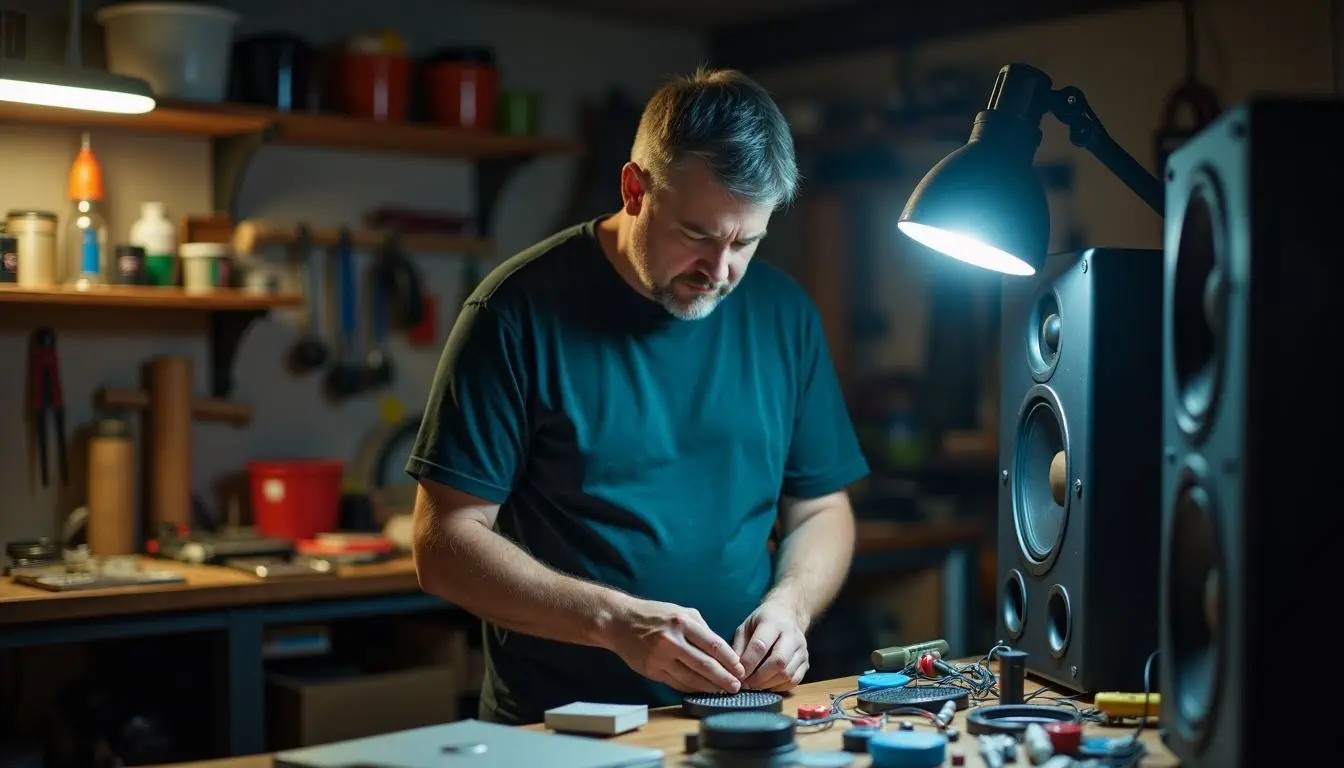
Get Your Gear Ready
You’ll need some key items to wire LED lights to speakers. Grab your tools and parts before you start. This prep step will make the job smoother.
Listing necessary components and tools
You need a few key items to wire LED lights to speakers. Grab LED strips, speaker wire, and a power source. Don’t forget wire strippers, a voltage tester, and screwdrivers. Electrical tape and wire connectors are must-haves too.
For safety, use a ladder if you’re working up high.
Some extra tools can make the job easier. Heat shrink tubing protects connections. A soldering iron joins wires firmly. If you’re running wires through walls, conduit tools help. Always check that you have the right gear before starting.
This prep step saves time and headaches later.
Wiring LED Lights to Speakers
Connect the LED lights to your speaker terminals with care. This step needs focus, but it’s not hard. Want to learn how? Keep reading!
Connecting LED lights to speaker terminals
LED lights can add a cool vibe to your speakers. Here’s how to connect them safely and effectively:
- Use the headphone or line output for LED connection. This method protects your system from damage.
- Attach the negative LED lead to the positive speaker terminal. This step ensures proper current flow.
- Link the positive LED lead to the wire going to the amplifier. It completes the circuit for LED function.
- Skip the resistor if your setup has a built-in current limiter. Many modern systems include this feature.
- Add a resistor if your system lacks current limitation. It prevents LED burnout from excess power.
- Check your subwoofer specs before connecting LEDs. A typical subwoofer runs at 70 watts, 120 volts, and 60 Hz.
- Test the setup with low volume first. This precaution helps avoid sudden loud noises or LED failures.
- Adjust LED brightness by changing the resistor value. Lower resistance increases brightness, higher dims it.
- Use 18 gauge wire for most LED-to-speaker connections. This thickness balances conductivity and flexibility.
- Insulate all exposed wire connections. Electrical tape or heat shrink tubing works well for this purpose.
Configuring for optimum LED performance
To get the best LED performance, you need to set things up right. First, pick LEDs that match your speaker’s power. Use a resistor to control the current. This keeps your LEDs safe and bright.
Next, wire your LEDs in series or parallel. Series wiring is good for small setups. Parallel works better for lots of LEDs. Make sure to spread the LEDs evenly around your speakers.
This gives you cool, even lighting. Lastly, add a switch to turn the LEDs on and off. Now you can enjoy your music with awesome light effects!
Testing and Troubleshooting
Test your setup and fix any issues fast. Learn more about common problems and quick fixes.
Steps to test the setup and identify common issues
Testing your LED speaker setup is crucial. Here are some steps to check your work and fix common problems:
- Use a multimeter to test LEDs. Set it to diode mode.
- Check LED voltage. A working LED should show about 1600 mV.
- Try a coin cell battery for safe LED testing.
- Look for loose connections. Use a crimping tool to secure wires.
- Check wire gauge. 14-gauge wire may be too thick for LED strips.
- Ensure proper splicing. Only splice 12-volt LED fixtures, not 120-volt wiring.
- Verify power supply. Make sure it matches your LED voltage needs.
- Test audio signal. Play music to see if LEDs respond to sound.
- Inspect for short circuits. Look for exposed wires touching each other.
- Check polarity. Ensure positive and negative wires are correctly connected.
Conclusion
You’ve mastered connecting LED lights to speakers! This project enhances your audio setup. Test your work and address any issues. With practice, you’ll create impressive light displays.
Now, enjoy your new sound and light experience!
For more tips on adjusting the brightness of your LEDs, check out our guide on how to dim LED lights with paper.
FAQs
1. What tools do I need to wire LED lights to speakers?
You’ll need LED lights, speakers, wires, a power source, and basic tools. Get crimp connectors, a drill, and maybe an op-amp or transistor.
2. Can I use any type of LED for this project?
No. Pick low-voltage LEDs that match your power source. Blue LEDs are popular. Make sure they can handle the current without burning out.
3. How do I connect the LEDs to the speaker wires?
First, find the positive and negative wires on your speaker. Then, connect the LED’s anode (long leg) to the positive wire and the cathode (short leg) to the negative.
4. Do I need to add anything else to the circuit?
Yes. Use a current-limiting resistor to protect the LED. You might also want a capacitor or filter to smooth out the signal.
5. Will adding LEDs affect my speaker’s sound quality?
If done right, it shouldn’t. Use a high-impedance input and proper isolation. An optoisolator can help prevent interference.
6. Can I make the LEDs change with the music?
Sure! Use a controller that responds to frequency. You can make a simple one with a MOSFET and some passive components. This lets the lights pulse with the beat.
References
- https://www.ledlightexpert.com/installing-led-lights-2?srsltid=AfmBOopU7Rl1_ViXSMVY-AA_vVJ6SwwizTvcQiAkH9_19ZhVw-ipLzEf (2022-10-18)
- https://www.ledlightexpert.com/installing-led-lights-2?srsltid=AfmBOoramNPNUDK2if-Jn_NVRJ6he8o8Xk131RECgYrP2BtHrgILgJNF (2022-10-18)
- https://www.electro-tech-online.com/threads/is-connecting-an-led-to-a-home-theater-system-safe-for-the-speakers-resistor-leds.128644/ (2012-07-17)
- https://www.crutchfield.com/learn/easy-connections-for-marine-led-speakers.html
- https://racheldebarros.com/prop-making/electronics/how-to-wire-leds-in-series-and-parallel-the-right-way/
- https://hitlights.com/blogs/premium-led-strip-lighting/the-ultimate-guide-to-wiring-led-lights-tips-and-tricks?srsltid=AfmBOoqGyPOIhSSiwegbt89Znu2JvNKxpYzoJ5cWk0CkEGG40IlJ3HLx
- https://www.wikihow.com/Test-LED-Lights
- https://www.soundcore.com/blogs/speaker/a-complete-guide-on-how-to-test-speakers (2024-09-11)

